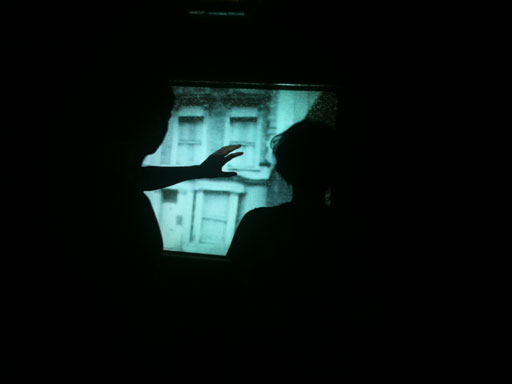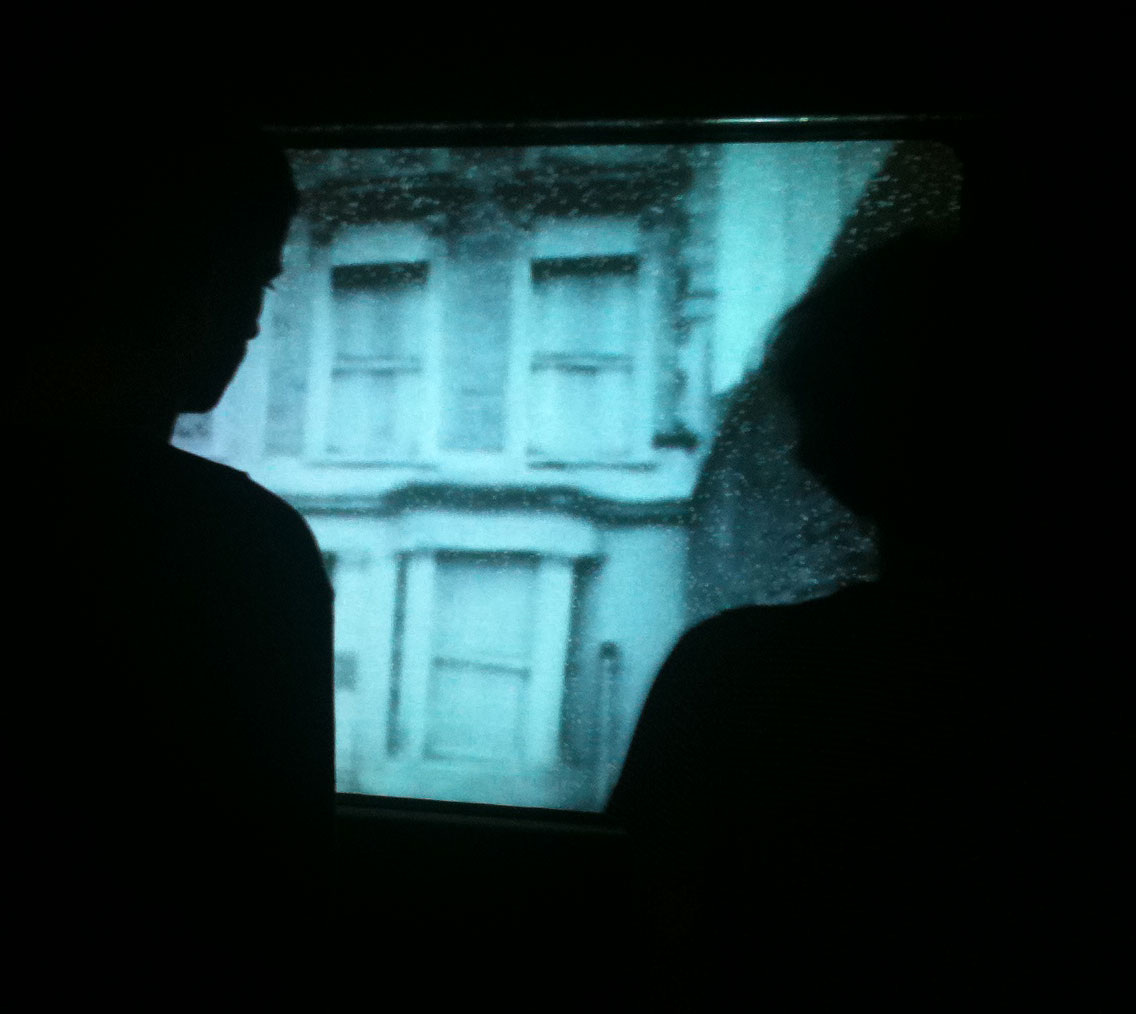

2011
The digital decomposition of 10 Ruston Close
15th August – 6th September 2011
10-6pm Monday to Friday, weekends by request
Private View: Thursday 1st September 2011
An image of 10 Rushton Close - a house buried by traumatic events - is decomposing.
Over three weeks, a photograph of 10 Ruston Close, formerly 10 Rillington Place, will be projected at Great Western Studios and available online at 10-ruston-close.com. Each time the image is viewed, either online or within the space, a single pixel will be destroyed, and it will be recompressed in the JPEG format, causing the image to deteriorate and decompose gradually.
Over the period of the exhibition the image will decompose directly in response to the number of views it receives.
John Wild presents an interactive installation that explores the relationships between trauma, memory and architecture within the digital age.
Pierre Janet wrote that, ‘Certain happenings would leave indelible and distressing memories – memories to which the sufferer was continually returning…’. The Traumatic events, which we so readily identify with the location and architecture of 10 Rillington Place, lead to an attempt by developers to repress the memory through the disappearance of the architecture itself. First by changing the name of the street to Ruston Close, then the eventual demolition of the house and the redesigned of the area to purposely obscure the position and layout of the old road. Thereby preventing a newly built house being readily identifiable as occupying the same plot upon which the old house once stood.
Whilst great lengths were taken to bury the memory of 10 Rillington Place, the advent of the Internet has lead to the emergence of numerous websites where, like Janet’s ‘continual return’, maps, photographs, and testimonials appear like hallucinations which are trawled in an attempt to return, relive, and understand this moment of violent rupture which continues to haunt the digital collective memory.
15th August – 6th September 2011
10-6pm Monday to Friday, weekends by request
Private View: Thursday 1st September 2011
An image of 10 Rushton Close - a house buried by traumatic events - is decomposing.
Over three weeks, a photograph of 10 Ruston Close, formerly 10 Rillington Place, will be projected at Great Western Studios and available online at 10-ruston-close.com. Each time the image is viewed, either online or within the space, a single pixel will be destroyed, and it will be recompressed in the JPEG format, causing the image to deteriorate and decompose gradually.
Over the period of the exhibition the image will decompose directly in response to the number of views it receives.
John Wild presents an interactive installation that explores the relationships between trauma, memory and architecture within the digital age.
Pierre Janet wrote that, ‘Certain happenings would leave indelible and distressing memories – memories to which the sufferer was continually returning…’. The Traumatic events, which we so readily identify with the location and architecture of 10 Rillington Place, lead to an attempt by developers to repress the memory through the disappearance of the architecture itself. First by changing the name of the street to Ruston Close, then the eventual demolition of the house and the redesigned of the area to purposely obscure the position and layout of the old road. Thereby preventing a newly built house being readily identifiable as occupying the same plot upon which the old house once stood.
Whilst great lengths were taken to bury the memory of 10 Rillington Place, the advent of the Internet has lead to the emergence of numerous websites where, like Janet’s ‘continual return’, maps, photographs, and testimonials appear like hallucinations which are trawled in an attempt to return, relive, and understand this moment of violent rupture which continues to haunt the digital collective memory.


